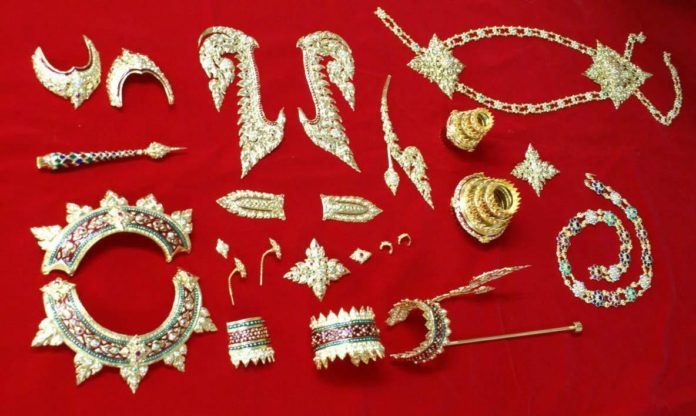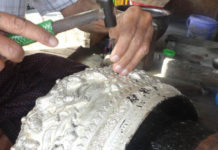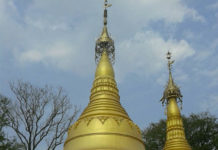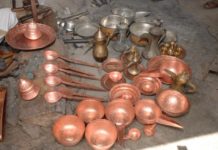
Archaeological findings in Thailand show that most tools used during the Dvaravati period were made of stone. Metal was used mostly for ornaments and Buddha statues. Advance was made around the mid-seventh century in the Srivijaya period, with the skilful use of metals such as gold, bronze and iron. From the tenth to thirteenth centuries, metal use was widespread, evidenced by findings including bronze rings and bracelets as well as tools made of gold, silver and copper. The centre of metalworking was the ancient Chiang Saen, whose metalworkers were famous for Buddha statues with fine details. In the twelfth century, Sukhothai made much advancement with metalworking, especially with the casting of Buddha statues. Known to be unique in this period were the Buddha statues of the Subduing Mara Posture.
When Ayutthaya became the new capital for Siam and an important economic centre in Southeast Asia, metalworking was abundant. Gold objects were found in the chamber of the stupa at Ratchaburana Temple. In the Bangkok period, when Bangkok became the new capital, metalworking flourished tremendously from the reign of King Rama I to that of King Rama IV, with goldwork considered as a fine art. In the reign of King Rama V, a workshop was set up at the Palace of Krom Luang Sanphasart, gathering skilled goldsmiths and silversmiths. The king also hired a German craftsman to teach the Thai artisans how to set diamonds and precious stones and use modern tools and techniques, such as metal hand-carving and enamelling.
These are the various types of metalwork.
Silverwork includes ornaments, nielloware and enamelled silverware made of standard silver. Archaeological evidence shows that silver had been used before the Dvaravati period across the country. In the north, silver was widely popular with influence from silversmith from Chiang Tung.
Goldwork consists of many techniques and tools. Gold has been used with important objects, such as royal utensils, rank decorations, ornaments, Buddha statues and amulets, and inscriptions.
Ironwork includes utensils such as knives, axes, pans, betel scissors and bells; weapons; and farming and construction tools such as sickles, hoes, shovels, hammers, chisels. One iron tool that remains popular is the Aranyik knife, made mostly at Ban Pho in Ayutthaya province.
Brasswork is made of copper mixed with zinc or copper with tin and nickel. Common traditional brasswork includes utensils such as water dipper, drinking glass, pans, trays, spoons and forks, and knives; religious objects such as bells, candlesticks and spittoons; and musical instruments such as gongs, cymbals and horns. Ban Pa Ao in Ubon Ratchathani province and Chaban Tiko sub-district in Pattani province are famous for traditional brasswork.
Krueang Long Hin is made of an alloy known as long hin (copper mixed with tin), rather popular for making bowls, drinking glass, spittoons, trays, ladles, spoons and forks, knives and candlesticks. Most famous among the objects is khan long hin, a kind of bowl made with this alloy. At present, only one family in Bangkok Noi district, Bangkok, continues to make it.




